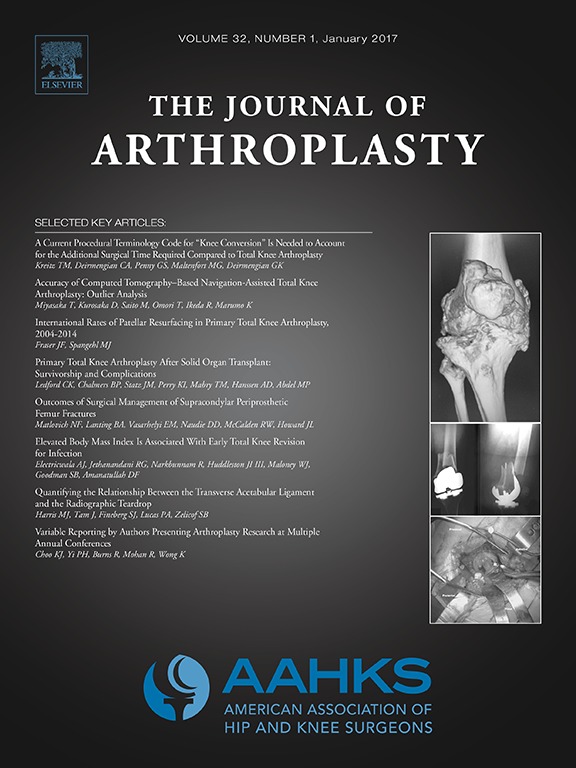
Arthroplasty
Comparing femoral component rotation and intercompartmental force differences between GB and MR TKA
J Arthroplasty. 2018 Jul;33(7S):S126-S130. doi: 10.1016/j.arth.2018.02.04491 patients scheduled for total knee arthroplasty were randomized to surgery completed using either the gap balancing technique or the measured resection technique. Outcomes of interest included final femoral component rotational alignment, and the difference between the medial and lateral compartment forces (Intercompartmental Force Difference) at full extension, 45 degrees flexion, 90 degrees flexion, and full flexion while trialing components. Mean femoral component external rotation alignment was significantly lower in the GB group compared to the MR group, though a greater degree of variation in final external rotation of the component was observed in the GB group. The intercompartmental force difference at full flexion was significantly lower in the GB group compared to the MR group, while no significant differences between groups were noted at full extension, 45 degrees flexion, or 90 degrees flexion.
Unlock the full article
Get unlimited access to OrthoEvidence with a free trial
Start TrialCritical appraisals of the latest, high-impact randomized controlled trials and systematic reviews in orthopaedics
Access to OrthoEvidence podcast content, including collaborations with the Journal of Bone and Joint Surgery, interviews with internationally recognized surgeons, and roundtable discussions on orthopaedic news and topics
Subscription to The Pulse, a twice-weekly evidence-based newsletter designed to help you make better clinical decisions
Exclusive access to original content articles, including in-house systematic reviews, and articles on health research methods and hot orthopaedic topics
Or continue reading this full article
Register Now

Subscribe to "The Pulse"
Evidence-Based Orthopaedics direct to your inbox.




































